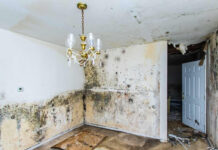Air quality alerts are in effect until midnight due to the New Jersey wildfire in the NYC area, which is 50% contained. The Jones Road Fire in Ocean County, New Jersey, is expected to grow with dry conditions and low humidity helping the wildfire’s continued activity. The fire has burned over 13,000 acres and will impact New York City and Long Island with some of the wildfire smoke. Firefighters are rushing to contain the fire in the Ocean County region of New Jersey. New York City was last affected by wildfire smoke in 2023 from fires in Canada, but this incident is not expected to be as severe. Winds will shift overnight away from the city but could bring back wildfire smoke on Friday.

Air Quality Alert Due to New Jersey Wildfire in NYC Area
744













